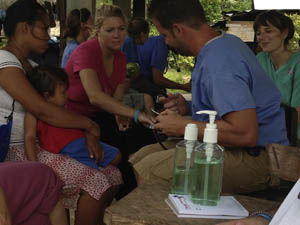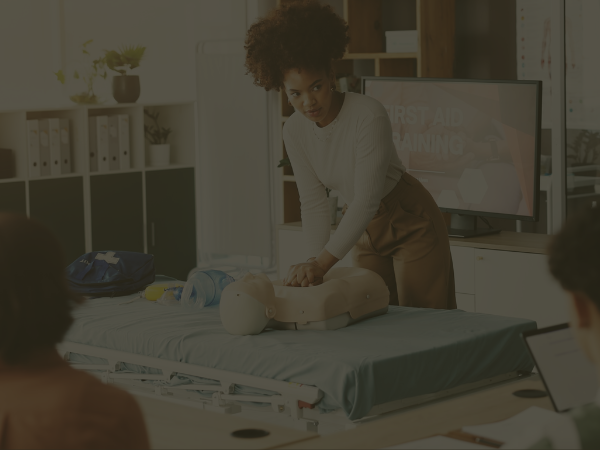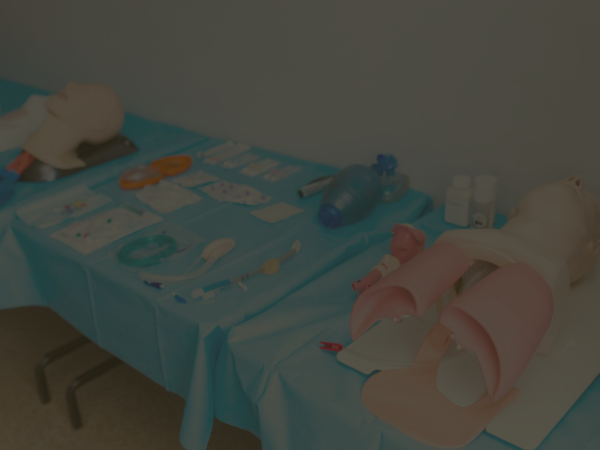Your cart is currently empty!
CPR Training to Prepare for Hurricane Season
Hurricane Florence roared ashore in the Carolinas and Virginia as a Category 1 hurricane, and by the time the storm was over, the death toll had risen to 37, reports CBSNews.com. The storm was not the strongest storm to ever hit the East Coast, but it did have a key differentiator. It was among the top rainfall-producing storms to make landfall, and according to Umair Irfan of MSN, the storm has become described as a “1,000-year rainfall.” This creates an imminent risk of unintentional drowning and ongoing public health crises, but CPR training and knowing how to respond can mean the difference between life and death.
Think about the response to a drowning victim. Remove the person from the water. Begin chest compressions for those that lack a pulse, and begin rescue breaths. In the U.S., asserts the Centers for Disease Control and Prevention (CDC), unintentional drowning prevalence stands at 3,536 unintentional drownings that were not boat-related per year. Given the significant amount of rainfall to continue soaking the Carolinas and Virginia over the last week, the drowning risk is not over yet. Instead of hoping for the best, take steps to prepare by learning why hurricanes are so dangerous, how to help those trapped in swift waters and a few other tips to increase your chances of survival.
Knowing How to Help Those Trapped in Flood Waters Can Mean the Difference Between Life and Death
Hurricanes are dangerous, life-threatening events that result in limited access to roads, resources and the threat of ongoing rainfall, not to mention additional hurricanes or tropical storms. In Carolina, the 1,000-year rainfall estimation is the consequence of a perfect storm system that moved into the area after the hurricane ended. Mother Nature’s assault means the risk of drowning and injury is not over, so knowing how to respond and help in the aftermath is essential.
Never go into floodwaters on foot. That much is clear. Floodwaters may contain untold disasters and dangers, and currents within floodwaters can be much deadlier than the rip currents of the ocean. An uncovered manhole, access to drainage systems, electrical lines and debris could become projectiles in the water, not to mention animals struggling to survive that may pose an added risk.
Those trapped in flood waters need professional help, and if you do not have a boat, you are ill-equipped to help. Obviously, some minor flooded areas may be okay to try to provide help, but wading into floodwaters is always advised against!
If you are able to help someone who has succumbed to rising waters, it may be necessary to treat different issues, including wounds, possible drowning and shock. Face it; ocean water during a storm may be warmer than average, but it is going to contribute to hypothermia due to wind chills caused by the hurricane. As a result, someone could slip into a pulseless state or stop breathing even if they have not inhaled water.
In these cases, knowing how to provide immediate attention to provide a temporary return to perfusion for the cardiovascular system through CPR training is key to survival. In addition, Ready.gov advises all people to think twice about their plans for moving to higher ground when storm surges arrive. Even those located further inland are not necessarily safe. Hurricanes can bring record-breaking rainfall hundreds of miles inland, and waiting until the storm strikes is a sure way to decrease life expectancy.
The worst possible place to be is in an enclosed attic, so always be mindful of how rescuers may be able to get to you. This will increase your chances of survival as well, and by sharing this knowledge with others, you can help reduce the mortality risk during these devastating storms.
Additional Hurricane Preparation Steps
 There are hundreds of ways each person can prepare for a hurricane emotionally and physically. However, taking the right steps at the right time in relation to the storm’s landfall will determine how well you overcome the storm and whether you become a statistic or a survivor. Some of these preparation steps include:
There are hundreds of ways each person can prepare for a hurricane emotionally and physically. However, taking the right steps at the right time in relation to the storm’s landfall will determine how well you overcome the storm and whether you become a statistic or a survivor. Some of these preparation steps include:
Before the Storm
- Gather Emergency Supplies. Your emergency supplies should include all prescribed mediations for yourself and family members, as well as over-the-counter medications and ointments. In addition, include at least three-days’ worth of non-perishable foods, batteries, a flashlight and blankets.
- Create a Family Disaster Plan. The family disaster plan should determine who will pick up children and where, where to meet during an evacuation, how to get everything moved as fast as possible and communication plans.
- Plan an Escape Route. If you are not leaving during voluntary evacuations, it is important to think about the possibility of mandated evacuations. Plan your escape route, considering areas prone to flooding and damage during major storms. Also, know your designated storm shelter for your community and whether it has space available.
- Secure Important Documents. Important documents, like insurance policies, birth certificates, and others should be secured in a waterproof container and available to be taken with you at a moment’s notice.
- Review NFIP Flood Insurance. It is essential to know what your responsibilities are during a hurricane if you have an NFIP policy. You may need to take photographs of belongings before the storm arrives and submit paperwork to prove your assets’ value.
- Check Your Car. The last thing you need during a hurricane is a vehicle that is out of fuel or won’t start. Check your car for gas and fluids before a storm strikes. This ensures you have a mode of transportation if you need to evacuate before the flooding begins.
- Secure Outdoor Belongings. Outdoor belongings can become deadly projectiles during hurricane-force winds. Secure all outdoor belongings with tie downs and move those that are smaller indoors.
- Consider preparing a pet disaster kit. Individuals with pets should consider their potential needs during a hurricane too, and the same goes for those with livestock. Preparing a disaster response kit for pets, backyard chickens, and any other animal should include any medications they take, a food supply, clean drinking water, and crates for transport.
- Charge your cell phone. You may lose power during a tropical storm or hurricane, so charge your cellphone to a full charge before the storm strikes. Turn it off at this point, and continue to watch the TV and listen to radio stations for more information on the storm.
- Turn your refrigerator and freezer to the lowest setting. Turn your freezer and refrigerator down to their lowest settings at least six hours before the storm. This will bring the temperature of food items down and decrease risk of foodborne illness. If the power goes out, a low-setting also helps to prevent spoilage, but you should only open the refrigerator or freezer when absolutely necessary if the power goes out.
During the Storm
Once the storm begins, it may be too late to evacuate or take other preparation steps. Instead of trying to think everything you need to do once it arrives, buckle down and react appropriately with these tips:
- Know and Avoid Flooded Areas. If you are evacuated or are not in area where the storm surge is a risk, know and avoid flooded areas.
- Remember the Ill and Elderly. Those with health problems and the elderly may not be capable of getting help during a storm, so keep in contact with them. If you do not hear from them for a given period, attempt to check on them by phone, provided it is safe to do so.
- Protect Your Pets. Pets may begin to exhibit unusual behaviors during a storm, so keep them calm with an appropriate harness, and talk to them.
- Listen to and heed warnings from governments and communities. Although flooding is the biggest risk of hurricane season, additional issues may develop. Tornadoes may form, and hail is a possibility. Listen to and heed all government and NOAA-issued warnings for your area.
After the Storm
 Once the storm is over, the battle for cleanup and recovery begins. In the aftermath of the storm, risk for certain issues, like carbon monoxide (CO) poisoning, electrocution and loss of power, may become more prevalent. So, follow these additional tips to make sure you survive after the storm passes as well:
Once the storm is over, the battle for cleanup and recovery begins. In the aftermath of the storm, risk for certain issues, like carbon monoxide (CO) poisoning, electrocution and loss of power, may become more prevalent. So, follow these additional tips to make sure you survive after the storm passes as well:
- Prevent CO Poisoning. CO is an odorless, colorless and lethal gas. It is often produced from the burning of fossil fuels, and simple things, like running a vehicle in a garage can introduce dangerous levels of CO in your home and shelter. Check your CO-detector after the storm passes by pressing its “Test” button. This step should also be taken before the storm strikes.
- Do not touch wet electrical equipment. Wet electrical equipment, especially breaker boxes, can introduce a dangerous amount of electricity through water, so do not touch any electrical equipment after the storm. Wait on a qualified technician from the electric company to restore power.
- Avoid wading in flood water. You may have “cabin fever” after the storm, but you could end up with a deadly illness from the spread of contaminants in floodwaters. Even small obstacles in flooded areas can result in cuts and serious injuries to the unsuspecting person.
- Save phone calls for emergencies. Aside from letting family members know you are okay, avoid using your cellphone after the storm. This preserves battery for emergency calls. Also, turn your phone on once per hour to check for updates on evacuation orders and additional threats from the storm. For instance, rising rivers may present added threats hours, if not days, after the storm ends.
- Volunteer to help others. After the storm passes, you have an opportunity to become part of the disaster relief effort. Of course, you will also need to know a few things about proper disaster response, like identifying groups with the right resources for hurricane relief.
A final step exists for preparing for the hurricane season that should be completed before the storm strikes. Sign up for your First Aid, BLS, and CPR Training course today. Unfortunately, the motivation to complete the course may be missing until you are faced with the devastation and deadly nature of a hurricane. Regardless of whether you were in the eye of the storm or only received trace amounts of precipitation farther inland, sign up for your training courses online.
Survive the 2018 Hurricane Season With CPR Training and Preparation
More than a month remains in the 2018 Atlantic hurricane season, and although the oceans have quieted temporarily, the risk of another major storm still exists. Those living in areas at risk for hurricane landfall need to understand why these monster storms are dangerous and the seriousness of the threats of rising water. Increase your chances of survival by taking the necessary preparation steps, and get your life-saving skills certification and CPR training now.
Have you endured the onslaught of the hurricane or other major storm? If so, share your experiences and steps you took in preparation. Also, share this article to social media, and become part of the solution to reduce fatalities and injuries during hurricane season.









Leave a Reply